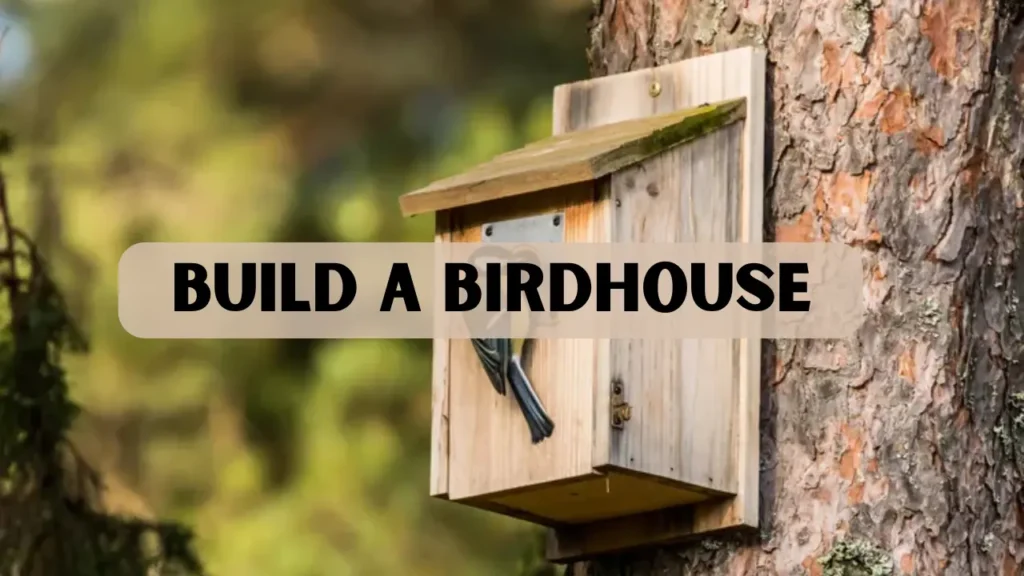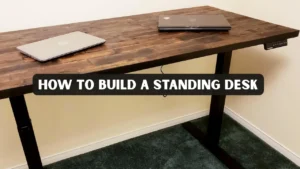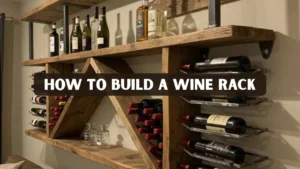Birdhouses are much more than simple decorations for your garden. They represent a practical and engaging DIY woodworking project that combines creativity, skill, and environmental care. Whether you are a beginner exploring woodworking or an experienced craftsperson looking for a new challenge, learning how to build a birdhouse offers satisfaction and practical benefits. From selecting the right type of wood to shaping decorative elements with a lathe, this guide will walk you through every stage of the process, ensuring your birdhouse is both safe and visually appealing.
Why You Should Build a Birdhouse
Building a birdhouse is an enjoyable and meaningful activity for multiple reasons. It enhances the visual appeal of your outdoor spaces, as a well-crafted birdhouse can complement garden plants, patios, or yard areas, adding charm and character. It also supports local wildlife by providing a safe nesting environment, helping birds thrive during breeding season and offering protection from predators and harsh weather. Engaging in building a birdhouse combines creativity with environmental stewardship.
Constructing a birdhouse is also an excellent educational and recreational activity. It allows you to practice essential woodworking skills such as measuring, cutting, shaping, and assembling. For example, a DIY enthusiast named Jane build a birdhouse with lathe-turned perches for her backyard, and within weeks, a pair of wrens had taken up residence. Projects like this show that woodworking birdhouses can be both functional and aesthetically rewarding while fostering personal achievement.
Materials and Tools You Will Need
Before starting your birdhouse project, gather all the necessary materials and tools to make construction smoother and ensure durability. Cedar, pine, and redwood are ideal woods because they resist decay and are safe for birds. Avoid pressure-treated or chemically treated wood, as these can be toxic. You will also need outdoor screws or nails, wood glue, and a non-toxic, water-based paint or stain to protect the wood from moisture and sunlight.
For tools, a saw, either hand or miter, is essential for precise cutting, while a hammer or screwdriver is needed for assembly. A drill with appropriate bits will create the entrance hole and ventilation openings. Measuring tools like a tape measure and square ensure accurate cuts and proper alignment. Sandpaper or a power sander smooths edges, preventing splinters that could harm the birds.
Optionally, a lathe can be used to create decorative edges, finials, or perches, enhancing both functionality and visual appeal. Clamps are helpful to hold pieces firmly in place during assembly. Proper preparation with these materials and tools ensures your birdhouse will be sturdy, safe, and visually pleasing, providing a welcoming home for your feathered friends for years to come..
Choosing the Right Birdhouse Design
Selecting the right design is a critical step in creating a birdhouse that is both functional and visually appealing. For beginners, a simple box-style birdhouse is ideal because it is straightforward to assemble and easy to maintain. This basic design provides all the essential features for bird safety, including a secure interior and a properly sized entrance hole, making it a reliable option for attracting local birds. Learning how to build a birdhouse properly ensures that your project is both safe for the birds and long-lasting.
Decorative designs, on the other hand, may include sloped roofs, carved edges, or lathe-turned perches. These birdhouses are more visually striking and allow for greater creative expression, but they often require advanced woodworking skills and more time to complete. Incorporating such decorative elements can elevate the birdhouse from a practical nesting site to a charming garden feature that draws attention and admiration.
Another important consideration is the type of birds you want to attract. Different species require specific entrance hole sizes and interior dimensions to ensure their comfort and safety. For example, wrens need a 1 1/8-inch hole, bluebirds prefer 1 1/2 inches, and sparrows generally require 1 1/4 inches. Proper ventilation and drainage are also essential, with small holes near the top for airflow and drainage holes at the base to prevent moisture buildup.
Step by Step Instructions
Following a clear sequence of steps will help you create a birdhouse that is both sturdy and attractive. Accurate measurements and careful assembly are key to a successful project.
Step 1: Measuring and Cutting Wood
Begin by measuring all the wood pieces according to your chosen design. Accurate measurement is crucial to ensure that the walls, base, and roof fit together properly. Once measured, cut each piece carefully using a hand saw or miter saw. Double-check all measurements before cutting to prevent mistakes that could waste materials. Precision at this stage makes the later assembly process easier and more efficient.
Step 2: Shaping Wood with a Lathe
If you are using a lathe, now is the time to shape edges and decorative elements. Rounded edges for the base or entrance hole, lathe-turned finials, and smooth perches not only enhance the visual appeal but also improve safety for the birds. Smoothing sharp edges prevents injury and adds a professional finish to your birdhouse. Lathe work is optional, but it provides an opportunity to add unique and elegant details to your project.
Step 3: Assembling Base and Walls
Next, attach the walls to the base using screws or nails. Applying a small amount of outdoor-safe wood glue at the joints can improve durability. Use clamps to hold the pieces in place while the glue dries. Pre-drilling holes for screws can prevent wood splitting and ensures stronger joints. At this stage, the birdhouse structure should already be taking shape, with a stable base and secure walls.
Step 4: Adding the Roof
The roof should have a slight overhang to protect the interior from rain. For sloped roof designs, cut the roof pieces at an angle for proper fit. Secure the roof firmly with screws or nails, and consider making it removable to allow for easier cleaning in the future. A well-fitted roof adds both protection and aesthetic appeal to the birdhouse.
Step 5: Drilling Entrance Hole and Installing Perches
Drill the entrance hole based on the bird species you are targeting. Attach perches if desired, making sure they are sturdy and positioned for easy bird access. Sand the entrance hole to remove any rough edges. For certain species, it is advisable to avoid perches, as predators such as squirrels or cats could use them to access the nest. Proper placement of the entrance and perches ensures safety and usability for the birds.
Step 6: Sanding, Painting, and Weatherproofing
Finally, sand all surfaces until smooth. Apply a water-based, non-toxic paint or stain to protect the wood from moisture and sunlight. Allow the finish to dry completely before installing the birdhouse. Natural stains are often best for blending with the outdoor environment, and finishing the wood enhances durability while maintaining a safe environment for nesting birds.
Advanced Tips for a Long-Lasting Birdhouse
Proper placement of the birdhouse is essential for both its longevity and the safety of the birds. It should be mounted at a height of five to ten feet above the ground, positioned away from direct sunlight and strong winds. Choosing a location where predators cannot easily reach the birdhouse helps protect nesting birds and their young. Thoughtful placement ensures that the birdhouse provides a secure and comfortable environment, encouraging birds to use it consistently.
Seasonal maintenance is equally important to keep the birdhouse functional and durable. Cleaning the birdhouse annually after the nesting season removes debris and helps prevent mold or infestations. Regularly checking for loose screws and repairing any weak joints ensures the structure remains stable over time. Proper ventilation and drainage are also critical; ensuring that all holes are clear allows for airflow and moisture removal, maintaining a healthy environment for the birds while preventing damage to the wood.
Creative Variations and Customizations
You can add creative touches to your birdhouse to make it both unique and visually appealing. Lathe-carved elements, such as finials, decorative edges, or rounded perches, not only enhance the overall aesthetics but also improve functionality for the birds. Painting designs, whether floral patterns, geometric shapes, or seasonal motifs, allows for personal expression and adds a charming touch to your garden.
Using reclaimed wood for your birdhouse provides a rustic, eco-friendly appeal while contributing to sustainability. Additionally, themed birdhouses, such as holiday-inspired designs, make thoughtful gifts or festive decorations. By incorporating creativity and customization, your birdhouse transforms from a simple nesting site into a striking and decorative feature in any outdoor space.
Case Study: A Backyard Transformation with a DIY Birdhouse
Sarah, an avid DIY enthusiast from Ohio, wanted to attract more birds to her backyard while honing her woodworking skills. She decided to build a birdhouse using cedar wood, incorporating lathe-turned perches and decorative edges for both style and functionality. She applied a natural stain to blend with her garden and drilled ventilation and drainage holes to ensure the comfort and safety of the birds.
After installing the birdhouse five feet above the ground, Sarah observed that within two weeks, a pair of wrens had taken up residence. Encouraged by this success, she built two additional birdhouses, one using reclaimed wood with a holiday-themed design. These additions not only attracted more birds but also became a conversation piece for neighbors. Sarah’s project illustrates that with thoughtful design, safe materials, and creative touches, a simple birdhouse can become both a functional wildlife habitat and an eye-catching decorative feature.
Common Mistakes to Avoid
When building a birdhouse, it is important to avoid common errors that can compromise both safety and durability. Using treated or chemically coated wood can be harmful to birds, so always choose natural, bird-safe materials. Incorrect sizing of the entrance hole or improper placement can prevent birds from using the house. Weak joints or loose screws can lead to instability, and poor weatherproofing can cause the wood to deteriorate quickly. Paying attention to these details will ensure your birdhouse remains safe and functional for years to come.
Conclusion
Building a birdhouse is a fulfilling project that combines creativity, skill, and care for nature. Each stage, from selecting appropriate wood to shaping decorative lathe elements, contributes to a birdhouse that is safe, durable, and visually appealing. Constructing a birdhouse allows you to practice woodworking skills, enjoy outdoor time, and support local wildlife.
By following these guidelines, you can create a beautiful and functional home for birds that adds charm and life to your garden. Take the time to build your own DIY birdhouse, experiment with decorative details, and enjoy the satisfaction of completing a woodworking project that benefits both your yard and the environment.
FAQs
What is the best wood for a birdhouse?
Cedar, pine, and redwood are excellent choices for birdhouses. They are naturally resistant to decay and safe for birds. Avoid treated or toxic woods, which can be harmful to nesting birds.
Can children safely help build a birdhouse?
Yes, with adult supervision, children can participate in safe tasks such as sanding, painting, or assembling pre-cut pieces. Involving children makes the project educational and enjoyable.
How high should a birdhouse be installed?
A height of five to ten feet above the ground is ideal, though adjustments can be made based on the bird species you aim to attract. Proper placement ensures safety and accessibility.
Can a lathe be used safely for decorative parts?
Yes, when using proper training and safety equipment. Lathe-turned elements like finials and perches add elegance to your birdhouse without compromising function.
How often should a birdhouse be cleaned?
Cleaning should be done once a year, preferably after the nesting season. This removes debris, parasites, and mold, helping maintain a safe environment for the birds.




